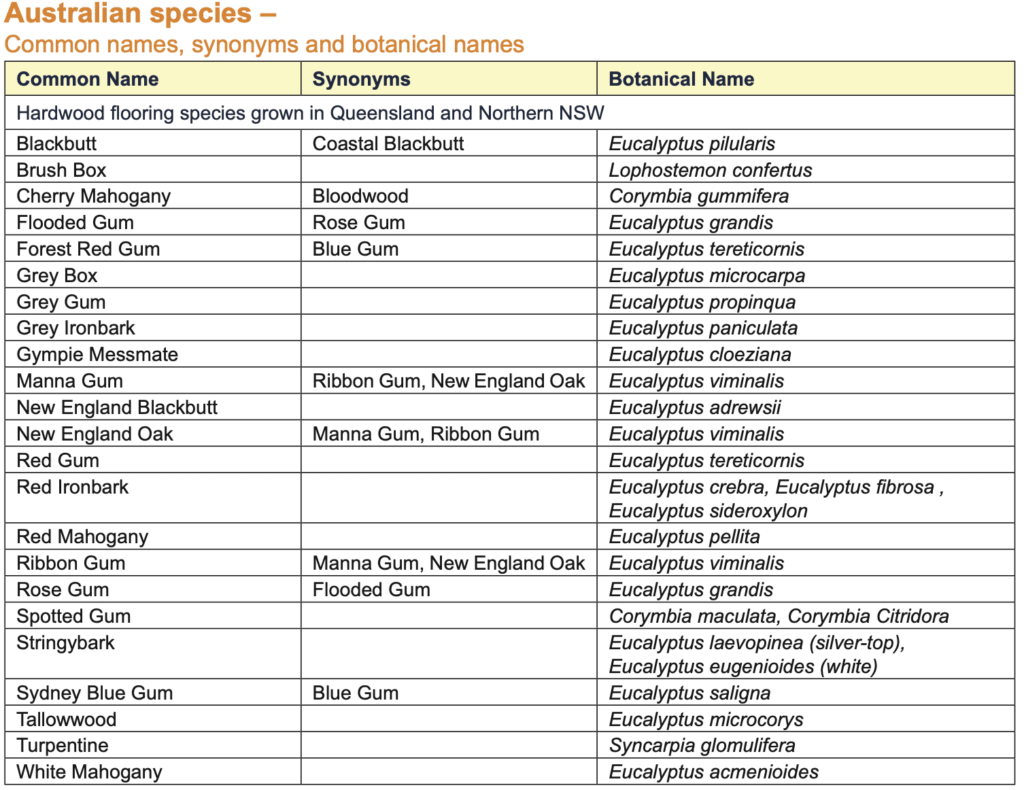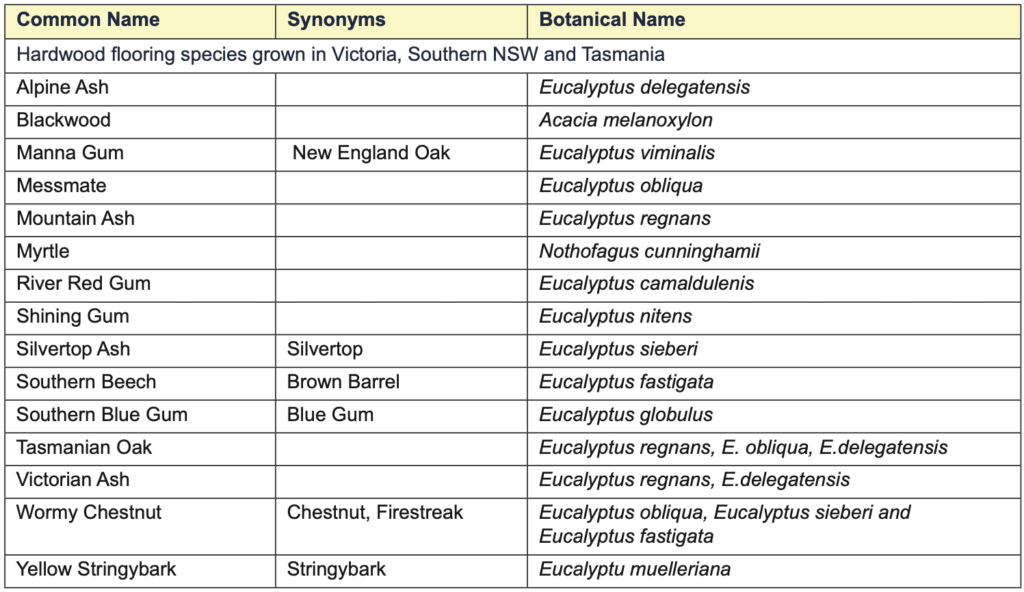Australia has a long tradition of common names for species, and ‘blue’ gum is a prime example where there is a ‘blue’ gum in at least three states and each is a different species. Flooring is generally sold by common name and not botanical name. Ironbark, Spotted Gum and Blackbutt are all common names of well known species. However, in other instances some older common names have been changed to newer names and one such example is where is Manna Gum is now often now referred to as Ribbon Gum or New England Oak.
Due to this lists of species provided by Australian manufacturers contain a range of common names. This not only occurs with Australian species but also with imported species such as Pacific Jarrah that this is not Jarrah as we know from Western Australia. Species mixes that provide a similar look are also marketed under single common names. Tasmanian Oak and Victorian Ash are probably the most common example of this. Victorian Ash is essentially a mix of two species and Tasmanian Oak has these same two species but with a third one added.
It is difficult at times to follow all these different names, yet there is still one other set of names with each tree having its own botanical name and this does not generally change. Provided below in the tables in alphabetical order are listings of the common names, other common names also applied to a species or group of species (synonyms) and the botanical name. The tables are separated by growing region. At times there may be two common names for the same species that are often used and in these instances both are listed.



In addition to the above there is also flooring sold that is based on colour rather than species. A mix of reddish timbers may be sold as Mixed Reds, Aussie Reds, River Reds or Forest Reds or a mix of lighter toned timbers as Northern Beech, Australian Beech, Southern Beech, Aussie Beech or Aussie Whites. It is however important to realise the number of species and actual species in any of these mixes can differ from one manufacturer to another and therefore the colour and tones and predominant grade features are also likely to differ (Refer to ATFA Information Sheet 33 – Hardwood Flooring Grades).
It is predominantly in this area of species mixes based on colour that new names will appear. Therefore if there is a desire to know more exact specifics about the flooring species and the name is not in the above tables or there is a mix of species based on colour, then request clarification from the supplier or manufacturer. Finally one other mix has also been predominant mainly in the past and this is simply ‘mixed hardwoods’ where the species and colours are not defined and although some floors may be predominantly reds and browns others may also have a light coloured timbers mixed in with darker timbers or simply be lighter coloured timbers.

Imported species –
There are also many imported species used in flooring in Australia and some are more commonly known than others. Oak, Merbau, Maple and Teak are examples of common names of some imported species. Such species are well known in Australia and similarly their performance is also well established.
However, there are also many other imported species used that are sold by common names, as well as others where new names have been used and may cover a range of similar species. It needs to be emphasised that marketing names given to some imported timbers may be chosen because there is some similarity in the colour tones, however they are not the Australian species and the properties and performance can vary markedly. At times a mix of species is also sold under one marketing name or product under the one name is being sourced from a number of different countries. Details relating to actual properties, country of origin and whether logging practices are sustainable and well managed can therefore be difficult to ascertain.
The manufacturing process of timber flooring is also very important and for this reason Australian producers manufacture to the requirements of Australian standards. While this should also occur with imported product there are times when this may not be the case and performance of the floor can be affected.
It is therefore emphasised that with imported flooring, although it may contain in its marketing name, a common name of an Australian species it is unlikely to be that species and that additional care is necessary regarding its performance as a floor. Examples of this are provided in the table below. There are however a number of imported species that are established in the Australian market and due to their longer association in the Australian market they do not include reference to an Australian species in their name.

